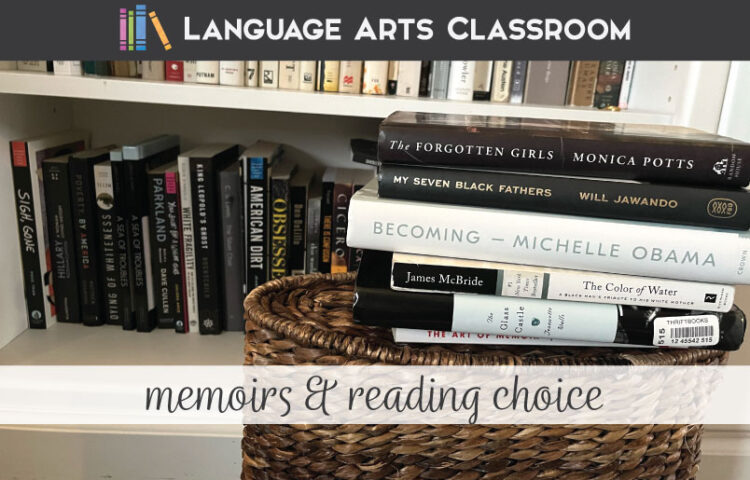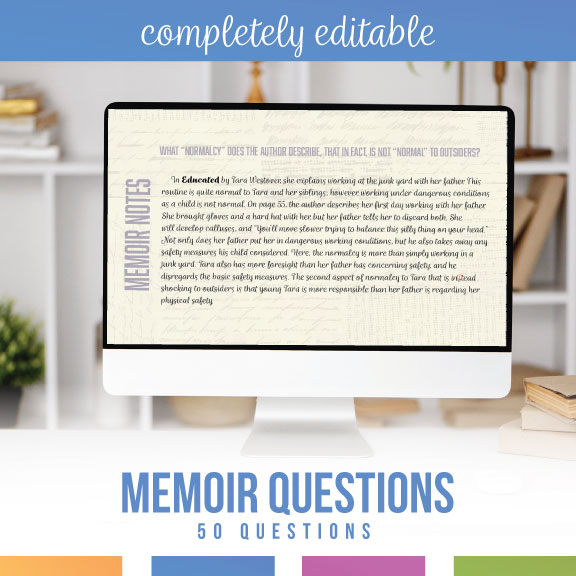Memoirs and reading choice align perfectly for high school language arts classes.
Memoir is my favorite genre which is why I was reluctant to teach them. Sure, I had memoirs in my classroom library, but I always hesitate to allow my personal preferences dictate my curriculum.
One year, I had a senior class that needed choice to engage students. Since I had memoirs at my fingertips, I experimented with memoirs in literature circles.
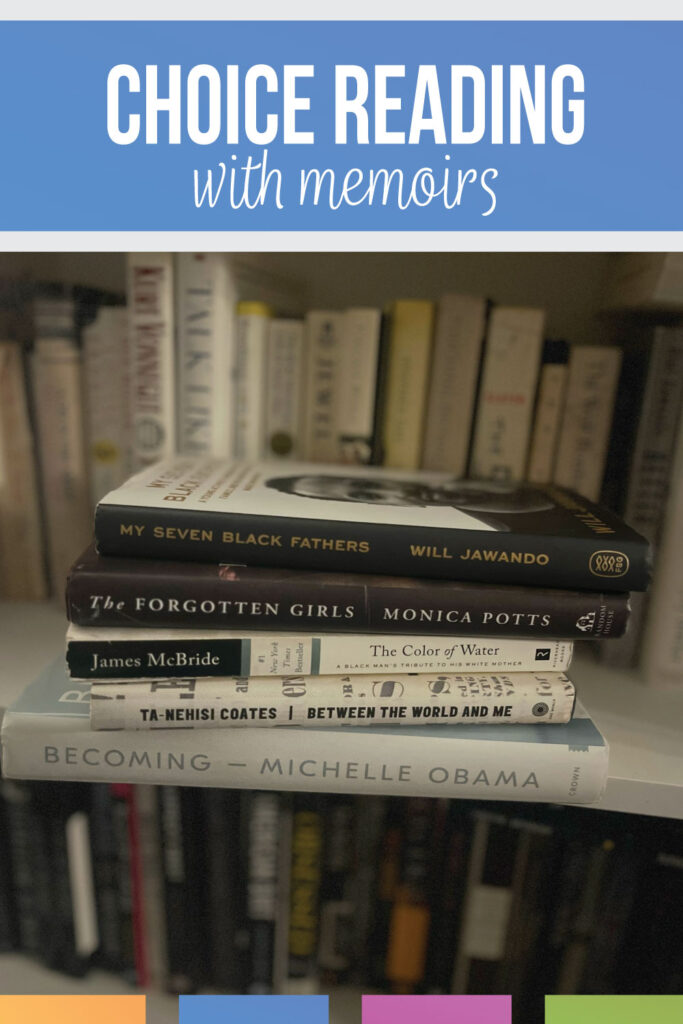
How can memoirs and reading choice work together?
Since memoirs provide diverse perspectives from real people, young readers can choose books that allow them to explore their identities, learn about new lives, and dive into unique pieces of history. Below are several activities to introduce memoirs into high school language arts classes.
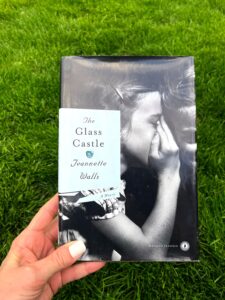
Activity One: Build on Prior Knowledge.
Define “memoir,” and explain it is a type of creative nonfiction. List the different types of creative nonfiction such as braided essays, visual essays, and hermit crab essays.
Memoirs are another type of creative nonfiction. Explain that yes, students can write them, but also, they can read these stories.
Ask students what they might expect from a memoir, an account of someone’s life with a narrow focus. Students might say:
- Authenticity
- Entertainment
- Growth
- Other “characters”
My classes normally ask how nonfiction can be creative. With creative nonfiction, the story happened. The dialogue is recreated, and the story is told with pieces of fictional work added (alliteration, setting descriptions, and on). The book Tell It Slant has pieces you can turn into excerpts. (It is illegal for me to post any excerpt, sorry!)
Finally, ask students if they have read any memoirs or personal essays. Often, memoirists write personal essays before they write a book.
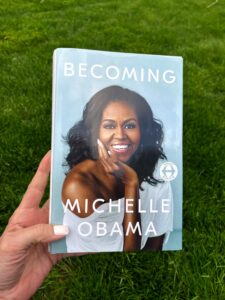
Activity Two: Present the Question—Whose Story?
The second activity when teaching memoirs and reading choice is two-pronged.
Give students sticky notes.
Create headers around the room (on a chalkboard or with posters):
- What humans learn from stories.
- Where we hear stories.
- Whose stories we learn.
Ask students to answer the three questions as many times as they’d like. Classes will probably realize that:
- Humans learn about their world through stories. Examples might include morals, rules, safety, patterns, and experiences.
- Humans hear stories by talking with others, by reading, and by viewing stories. Examples might include family gatherings, friendly conversations over social media or in the hallway, on social media, from movies and television, and through books.
- Humans hear stories from those who speak, act, and write.
Acknowledge the strong thinking students did, and praise them for realizing the various places they engage with stories. Students might mention their stories from youth, religious texts, and popular television shows. Continue by highlighting places where stories are read: by parents/guardians, by teachers, and by caregivers.
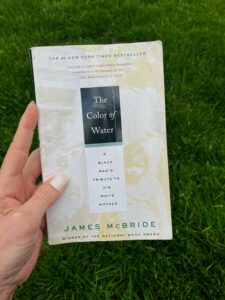
Transition to diverse voices.
Continue the discussion with a slight transition to consuming stories. Show students the statistics on publishing. We often spend a decent amount of time reflecting on why true stories are popular.
Our discussions turn to what happens when stories are not shared. Students might realize that learning from various people helps everyone to grow. Continue the discussion by acknowledging how students like to be heard and acknowledged. Possible options include:
- Do people enjoy sharing their stories?
- Do others enjoy learning about others?
- What happens when we learn about others?
Ask students to draw conclusions. Finally, ask students about the power of hearing stories from others. Do they like watching other stories on social media? Do they enjoy sharing events with their friends? Capitalize on their interests in what they learn from seeing new perspectives.
Memoirs are a way of telling stories from many voices.

Activity Three: Reader’s Rights.
Review the features of memoirs, and then review the power of stories. If a book is marketed as a memoir, what do readers believe? Students might say that: The story happened. The memoirist is truthful, at least telling the truth as they see it.
Some pieces are recreated, like dialogue.
Share an excerpt from James Frey’s book, A Million Little Pieces. (Again, I cannot legally share an excerpt. Other fake memoirs exist if you can access one of those books.) Discuss the power of sharing stories, of revealing pieces of your life, and of overcoming adversity. Walk students through the story, and evaluate his writing.
Show students the clip of Oprah interviewing Frey concerning the falsehoods in his memoir. Then you can consider—
- What are students’ responses? Do they feel misled?
- Who is responsible for telling the truth in memoirs?
- Where does the line between “creative” and “nonfiction” start?
Close the activity by asking students to create a list of “readers’ rights” concerning memoirs. What do readers have the right to expect when reading someone else’s story?
You might compile these answers or create a community list. Consult the list as you work through the stories.
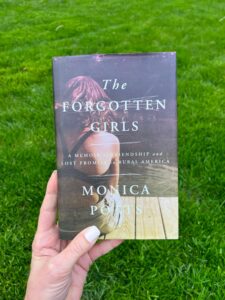
Common Question: Nonfiction? Autobiographies?
When developing any reading unit, we English teachers want to be accurate. Genres overlap, and the best books often brush into multiple labels. In the first activity, I specifically define genres to lead everyone to the realization that literature is full of experimentation. Rarely does a book fit into one neat genre. In fact, Goodreads clearly shows this detail with readers labeling books differently.
As the school year continues, circle back to original discussions concerning genres. If you are allowed, you can pull up Twitter or your Goodreads account to provide an authentic picture of adults debating the categorization of books.
Bundle Memoir Choices.
Google will return thousands of memoirs. Tara Westover wrote a powerful memoir (Educated) but when I taught it once, students struggled. It might be best for college readers.
Here are several memoirs that have worked well with high school seniors:
- I Know Why The Cage Bird Sings by Maya Angelou (sometimes referenced as an autobiography)
- The Forgotten Girls by Monica Potts
- The Glass Castle by Jeannette Walls
- Becoming by Michelle Obama
- The Color of Water by James McBride
- My Seven Black Fathers by Will Jawando
- Down These Mean Streets by Piri Thomas
Becoming and My Seven Black Fathers also work well for excerpts if you do not want to teach them entirely.
(I am an Amazon affiliate, and you can read my complete blog disclosures.)
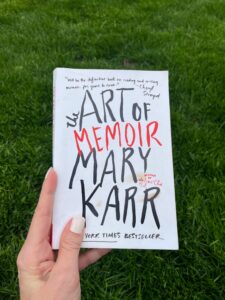
Final Ideas for Memoir Lessons.
I rarely end memoir lessons with a quiz or test. Literary analysis papers are an option, as are students writing a mini-memoir. If you need guidance for memoir writing, I highly suggest The Art of Memoir by Mary Karr.
Memoirs and reading choice fit nicely together because teachers can develop a robust and diverse list of memoirs and allow readers to choose what to study. Memoirs also for you to meet a variety of standards with high school literature lessons.

